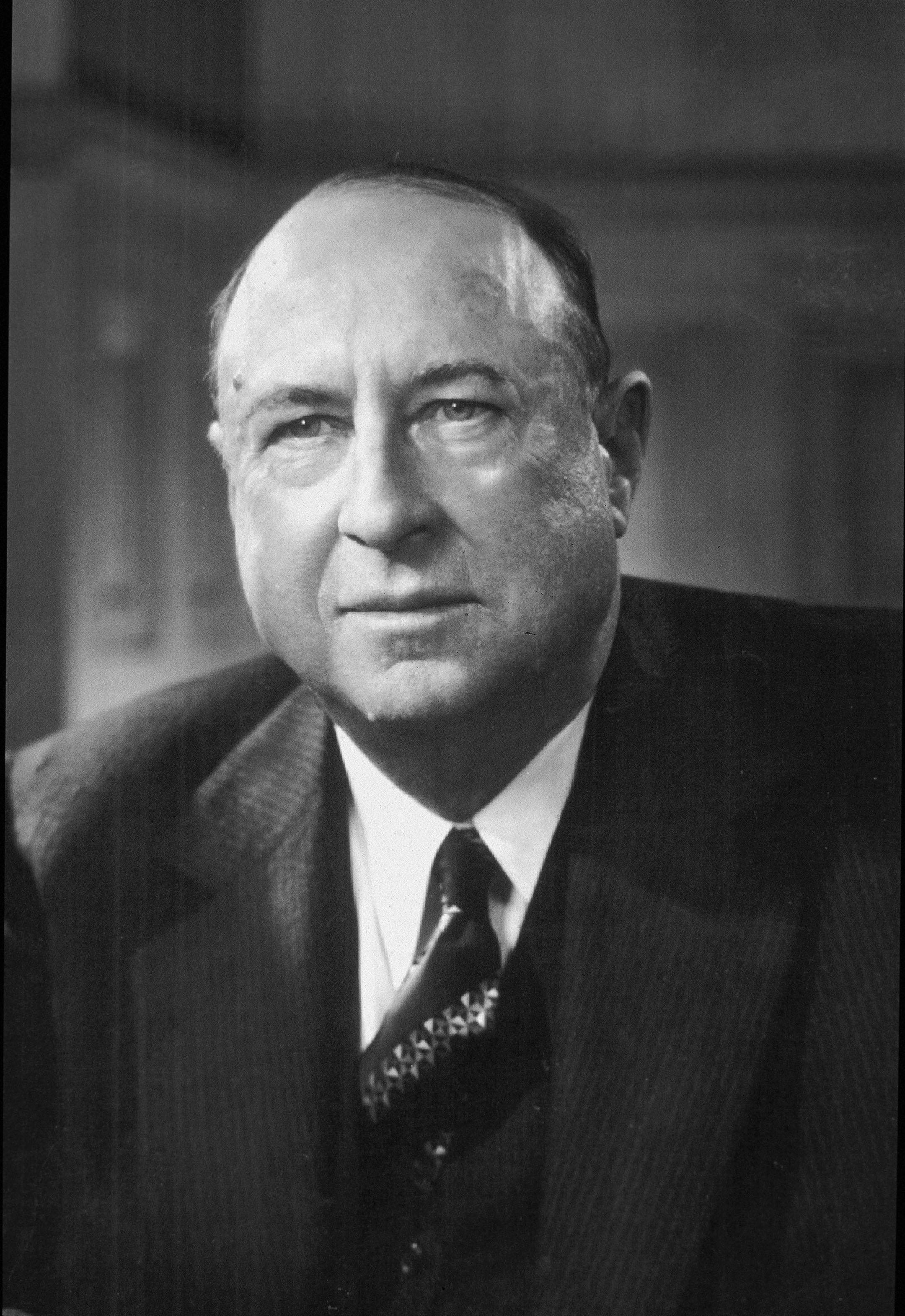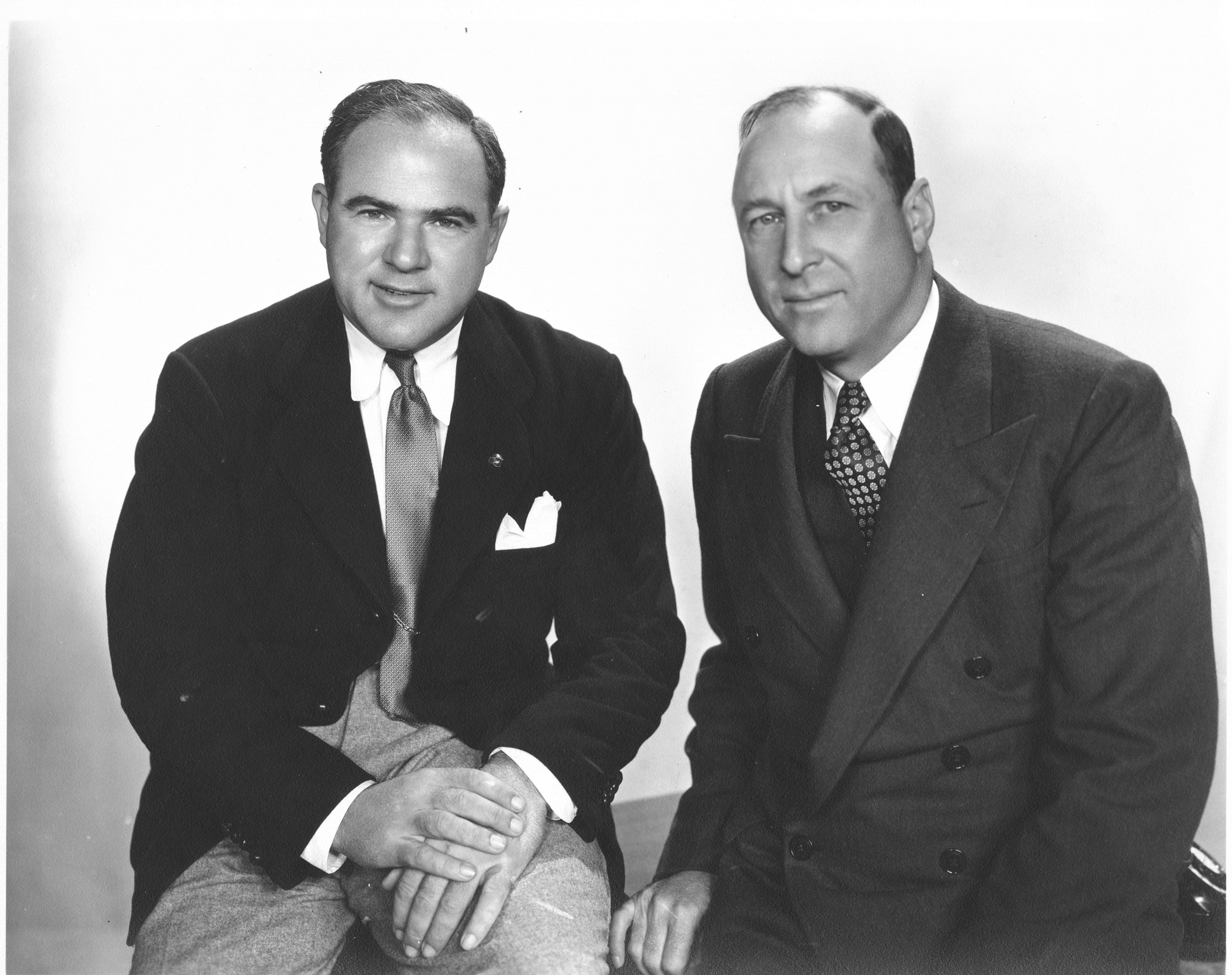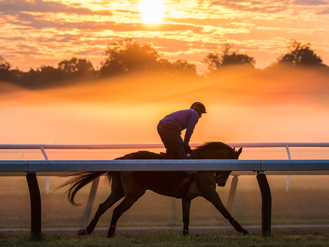Dr. Charles H. Strub
Some building projects might be described as monuments to those who envision, design or construct them. In the case of Santa Anita Park, the masterminds used nature as their cohort. For more than 80 years, going to the thoroughbred races at Santa Anita has gifted all who enter the gates with an extra vista for glorious appreciation. Added to the beauty of the horses themselves and the timeless racing venue, the backdrop is a section of the wonderous San Gabriel mountains — sometimes snow-capped, always handsome and a perennial reminder of nature’s proclivities. Dr. Charles H. Strub was one of those masterminds.

2018
Nov. 3, 1884, Hollister, California
March 28, 1958, Los Angeles, California
Biography
Some building projects might be described as monuments to those who envision, design or construct them. In the case of Santa Anita Park, the masterminds used nature as their cohort. For more than 80 years, going to the thoroughbred races at Santa Anita has gifted all who enter the gates with an extra vista for glorious appreciation. Added to the beauty of the horses themselves and the timeless racing venue, the backdrop is a section of the wonderous San Gabriel mountains — sometimes snow-capped, always handsome and a perennial reminder of nature’s proclivities. Dr. Charles H. Strub was one of those masterminds.
Born on Nov. 3, 1884, in Hollister, California, Dr. Strub was a dentist with an interest in several sports. In his profession, he capitalized on what were then modern pain-killing techniques. His entrepreneurial streak earned him the nickname “The Advertising Dentist.” Painless tooth extractions were perhaps the best advertisements of all.
In 1933, Dr. Strub turned his interest to thoroughbred racing and was granted a license to build and operate a racetrack in San Francisco. These plans did not work out, but Strub was undeterred and shifted his focus to another effort, a partnership with Hollywood film mogul Hal Roach. Their venture was to create the Los Angeles Turf Club and Santa Anita Park. There was some initial skepticism about the track’s chances for success.
“Why, you won’t even be able to sell horse manure there,” one of Strub’s friends told him, according to an article in The BloodHorse.
“But don’t forget, sir, we shall sell a lot of that,” Strub said.
Santa Anita opened on Christmas Day in 1934 and was an immediate success. At the time, this meant that thoroughbred racing had lavish courses on both sides of the country’s southern-oriented meccas, which stood for chic beauty, incorporating the manmade with the natural. Florida had Hialeah and now California had Santa Anita. The glories of the former have not survived, but Santa Anita still greets its fans and aficionados with the combined glories which awed 1930s racegoers.
Of course, Santa Anita could not thrive on beauty alone. Dr. Strub, Roach, et al, created a racing product that was a beacon of quality and featured good management. There had been a brief flirtation with a $100,000 handicap race in Tijuana, Mexico, but when the Santa Anita Handicap was born with a $100,000 purse in 1935 — the first of the famed “Hundred Granders” — the Southern California track had turned a page in American racing. With such a purse in the offing, the winter patterns of top stables from New York, Kentucky, Florida, etc., immediately responded. It was not just the money, although a winner’s purse of $108,400 easily eclipsed the likes of, say, the Belmont Stakes’ $35,480 that spring. Santa Anita was close to Hollywood — and Hollywood meant glamor and style.
The first Santa Anita Handicap prompted C. V. Whitney to send his grand old Equipoise on a prolonged train journey. Equipoise made it to the West in time for two prep races, but he finished seventh behind Azucar in the first Santa Anita Handicap. The hopeful venture proved to be his last race. By the following year, Alfred Vanderbilt was attracted enough to submit his great handicap star Discovery to the adventurous cross-country train ride. Discovery, too, prepped twice, winning once, before running fifth behind Top Row in what took on the affectionate nickname of “The Big ’Cap.”
The Santa Anita Handicap and the overall quality of the racing product brought credibility and immediate attention to racing in the Los Angeles area, which had been dormant for a quarter-century prior to Strub and his partners opening Santa Anita. Even though the country was suffering through the Great Depression during Santa Anita’s early years, the track thrived financially because of Strub’s success as a marketer and ability to attract top stars such as Seabiscuit. In his executive capacity, Strub is also credited as introducing several significant innovations to American racing, including finish-line cameras, electronic timing, and electronic starting gates.
The Santa Anita Handicap was long the bellwether event at the majestic course, but other prestigious contests such as the Santa Anita Derby, Santa Margarita, and the San Juan Capistrano, among others, became important fixtures in American racing. The champions to have won “The Big ’Cap” or the Santa Anita Derby (or both) include Seabiscuit, Round Table, Affirmed, Spectacular Bid, John Henry, Alysheba, Swaps, Sunday Silence, Alysheba, A.P. Indy, and Tiznow, among others.
Along with being a dentist, Dr. Strub played professional baseball for a couple years in the Pacific Coast League and later became a partner in the San Francisco Seals of that circuit. Strub is credited with lifting the profile of the minor leagues through the sale of players to the majors for unprecedented sums, including eventual Hall of Famers Joe DiMaggio, Lefty Gomez, and Earl Averill.
Strub was honored by the New York Turf Writers Association as “the man who did the most for racing” and by the Horseman’s Benevolent and Protective Association of America for “outstanding contributions to thoroughbred racing.”
Strub died in 1958 at the age of 73. One of his sons, Peter M. Strub, was involved in racing as an owner and breeder, while another son, Robert P. Strub, had an executive role at Santa Anita.
Media







